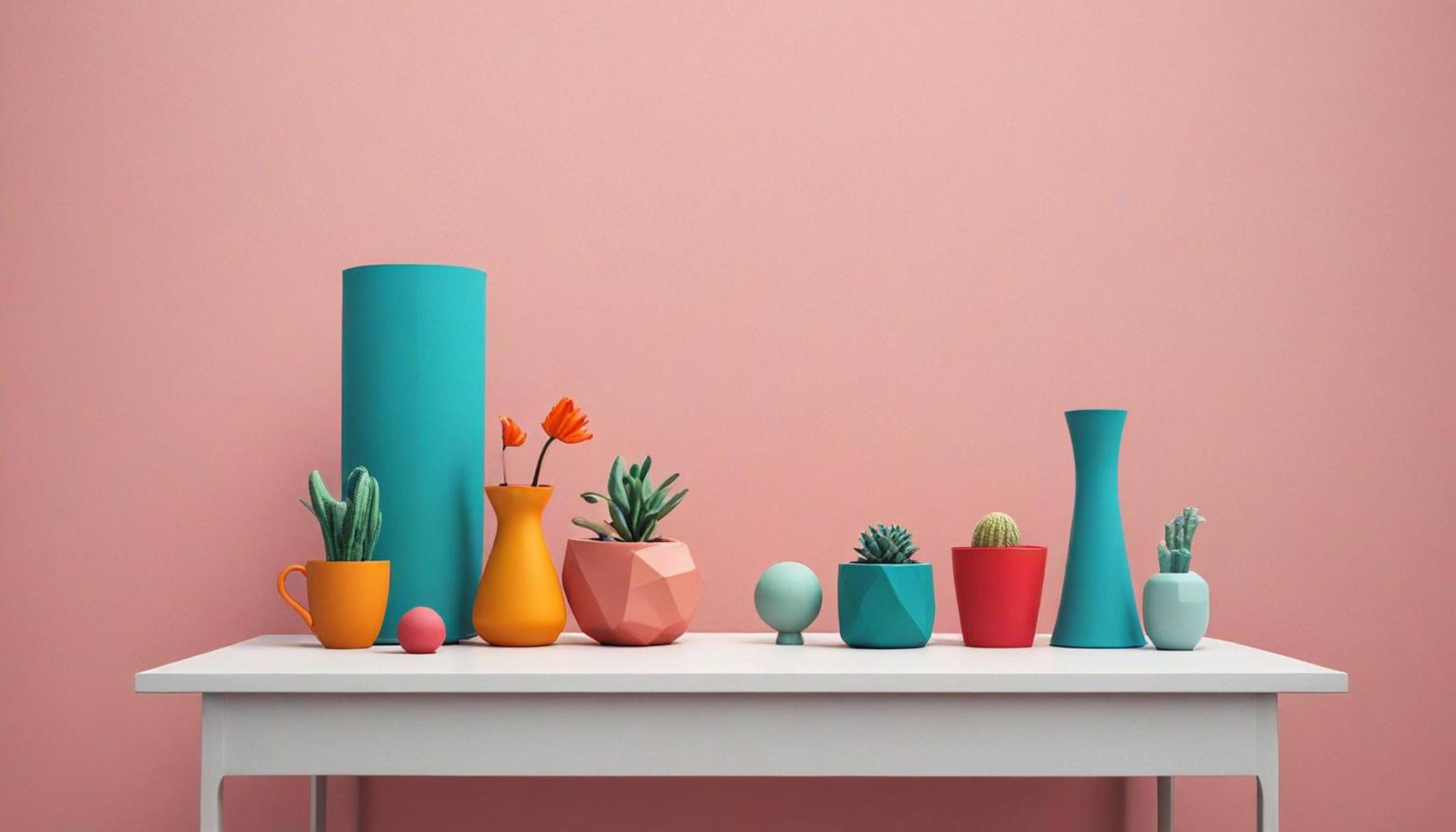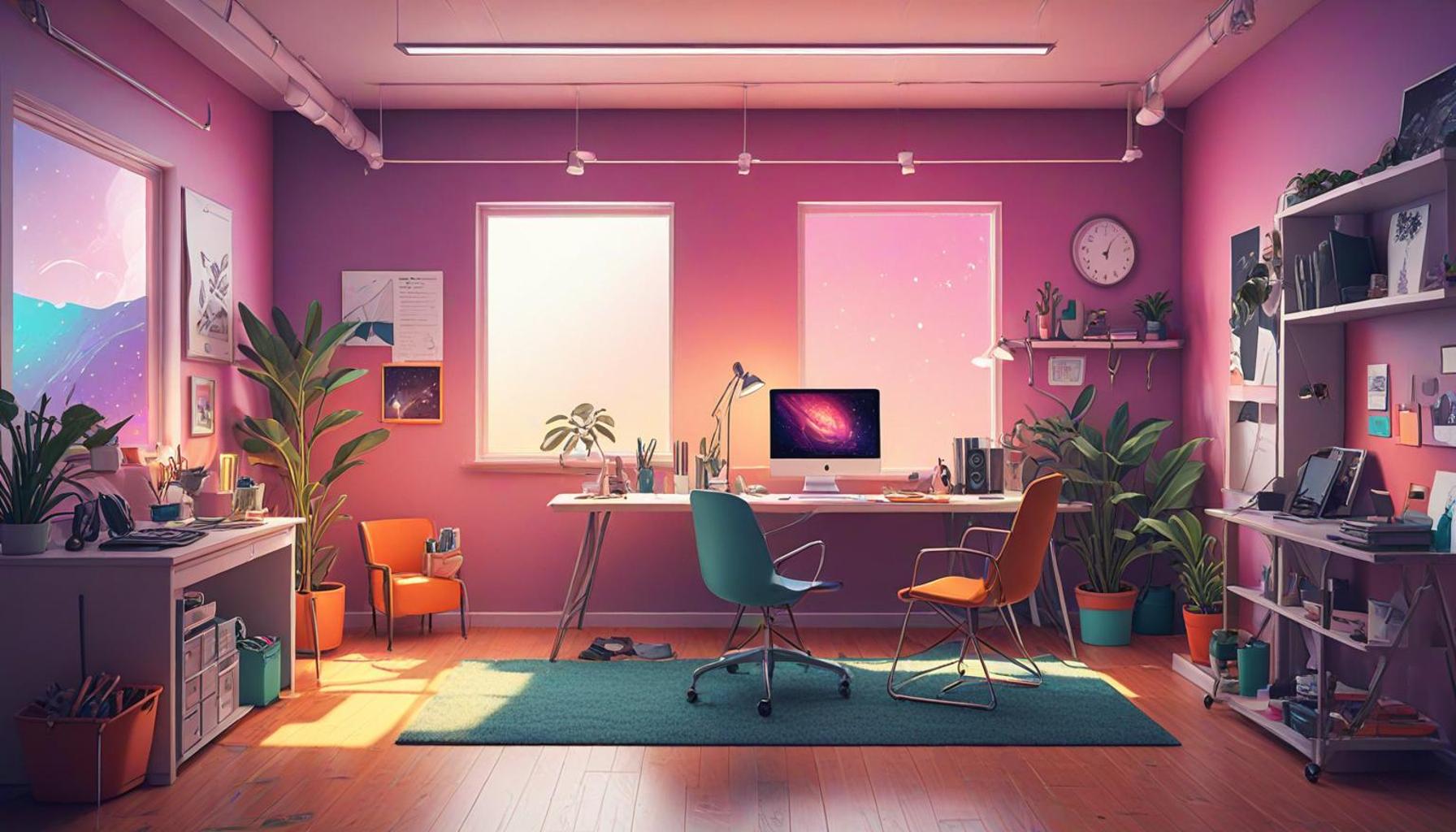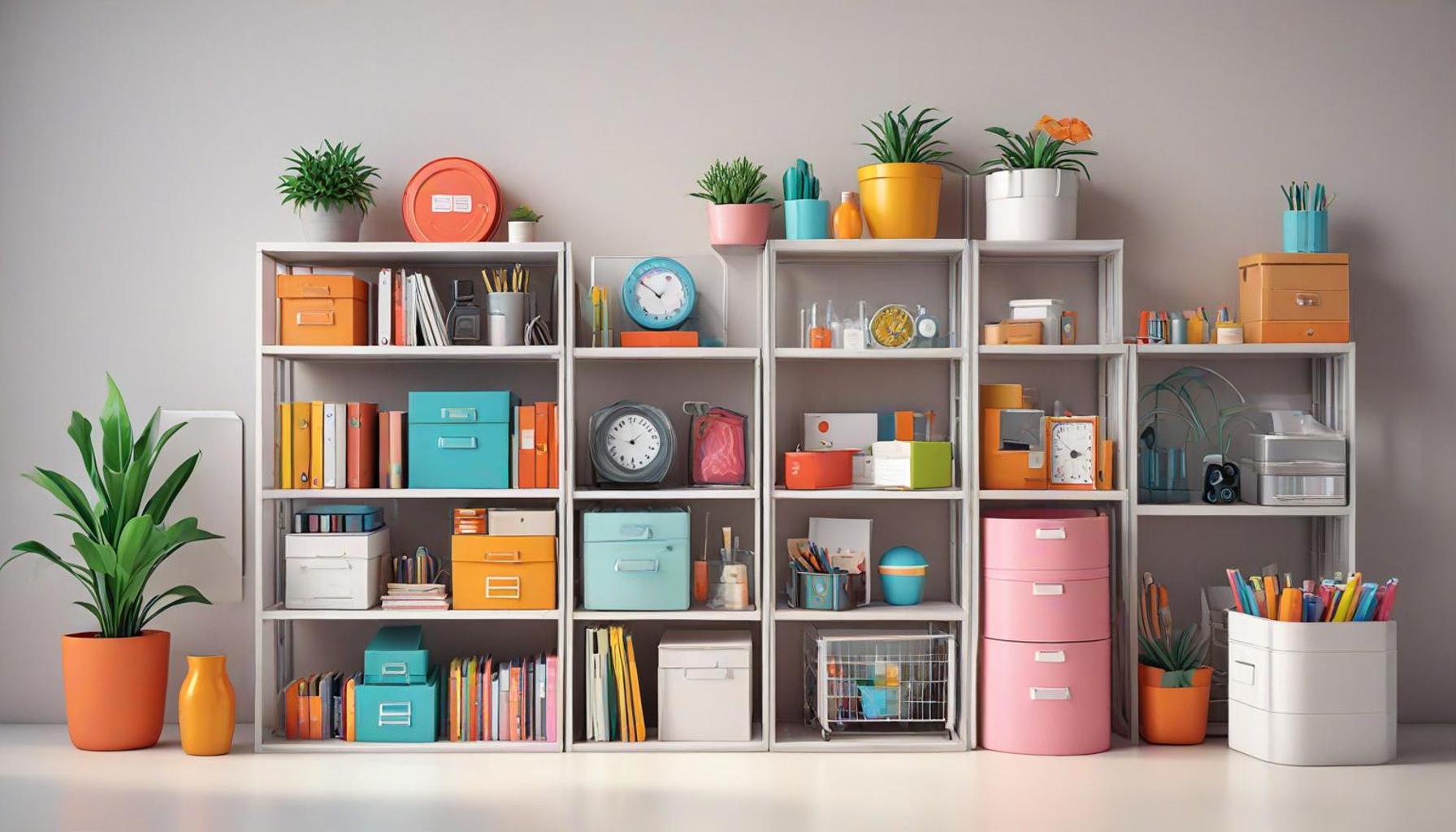The relationship between minimalism and the choice of space-saving decorative items

The Appeal of Space-Saving Decor in a Cluttered World
The modern world often feels cluttered, with excess items competing for our attention. As a result, minimalism has emerged as a popular lifestyle choice, emphasizing simplicity and intentional living. One of the most fascinating aspects of this movement is the harmonious relationship between minimalism and space-saving decorative items.
Space-saving decorative items are not just practical solutions; they embody the minimalist ethos of reducing unnecessary clutter while still showcasing style and personality. These thoughtfully designed pieces are extremely versatile and provide a perfect blend of form and function. Here are some key features of these items:
- Functional Design: Many space-saving items, such as nesting tables or ottomans with hidden storage, serve multiple purposes, which reduces the need for additional pieces. This multifunctionality is not merely a trend but a necessity in contemporary living spaces, especially in urban environments.
- Efficient Use of Space: Innovatively designed to fit seamlessly into smaller areas, items like wall-mounted shelves or foldable chairs promote an uncluttered environment and allow homeowners to maximize their square footage. For example, a foldable desk can transform any corner of the house into a productive workspace, freeing up space when not in use.
- Aesthetic Appeal: While functionality is key, many space-saving decorative items don’t compromise on aesthetics. Designers are increasingly creating visually stunning items that serve a purpose and enhance décor, such as geometric planters or minimalist artwork. These pieces act as focal points, inviting admiration without overwhelming the space.
In the United States, where homes can be both stylish and compact, these items have gained considerable traction among those seeking to declutter their lives. According to a recent survey, 63% of Americans report feeling overwhelmed by the clutter in their homes, prompting a growing interest in minimalism and space optimization. From urban apartments in New York City to cozy cottages in Portland, home dwellers are rethinking how they decorate and utilize their spaces.
As we delve deeper into this topic, we will uncover how these decorative choices not only enhance our living environments but also reflect our lifestyles. They enable individuals to curate their surroundings intentionally, often leading to improved mental clarity and a sense of calm among the chaos of modern living.
Join us as we explore the intricacies of minimalism and discover the transformative potential of space-saving decorative items in creating a balanced, peaceful home environment. Whether you’re seeking to embrace minimalism fully or simply looking for smart decorative solutions, this exploration promises insights that resonate with the needs of contemporary life.
DISCOVER MORE: Click here to learn about the power of letting go
Embracing Minimalism through Space Efficiency
At the core of the minimalist movement lies a profound appreciation for simplicity and sustainability. This philosophy extends well beyond mere aesthetics; it deeply influences how we choose to fill our living spaces. In a landscape cluttered by excess, the selection of space-saving decorative items becomes a significant act of intentionality, shaping not only our homes but also our minds. By prioritizing functional design over consumerist tendencies, minimalism marries the appeal of simplicity with the necessity for practicality.
To better understand the relationship between minimalism and space-saving decor, it is essential to recognize the various categories of decorative items that align with minimalist principles. These include:
- Transformative Furniture: Items like a compact coffee table that can expand for family gatherings or a sofa bed that allows for quick transitions between lounging and sleeping exemplify how minimalism influences furniture design. Such pieces ensure that every item serves a dual function, reducing the need for multiple items and maximizing utility.
- Ingenious Storage Solutions: An attractive storage bench can double as both seating and an organizational tool. Integrating aesthetics with necessary storage functions enables homeowners to maintain an orderly environment without sacrificing style. Decorative baskets and sleek storage boxes further illustrate this concept, providing a home for miscellaneous items while enhancing visual appeal.
- Pathway to Green Living: Minimalism and sustainability often go hand-in-hand. Biophilic design elements, such as planters that incorporate air-purifying plants, not only beautify space but also contribute to a healthier living environment. These design choices reflect an increasing awareness of environmental impact, marrying style with sustainability.
American design trends reflect this shift toward minimalism, especially in urban areas where space comes at a premium. Cities like San Francisco and New York City are often associated with compact living. In such places, many residents are adopting minimalist practices and implementing space-saving solutions to create functional and aesthetically pleasing homes. According to a survey conducted by the American Institute of Architects, 70% of homeowners indicate a desire for open-concept living spaces, reinforcing the idea that less can indeed be more.
These trends illustrate a growing cultural movement that values intentional living. When individuals seek to decorate their homes with purpose, they often gravitate towards items that not only serve a practical function but also complement a streamlined, clutter-free design aesthetic. As individuals embrace this lifestyle, they discover that space-saving decorative items are not just ways to declutter but also tools for enhancing mental well-being.
As we further explore this dynamic relationship between minimalism and space-saving decor, we will uncover how these thoughtfully chosen items can transform not only physical spaces but also our overall quality of life. The process of curating an intentional home environment speaks volumes to the minimalist philosophy, fostering serenity amidst a chaotic modern existence.
| Advantages | Explanation |
|---|---|
| Enhanced Aesthetic Appeal | Minimalism emphasizes clean lines and neutral colors, making spaces appear more open and spacious. |
| Functional Décor | Space-saving decorative items often serve dual purposes, combining functionality with design to optimize living spaces. |
| Encourages Mindfulness | Minimalist approaches encourage individuals to be conscious of their possessions, leading to a more meaningful selection of decorative items. |
| Improved Organization | Items designed with minimalism in mind often include organizational features that promote tidiness and reduce clutter. |
In exploring the relationship between minimalism and space-saving decorative items, it becomes evident that adopting a minimalist lifestyle enhances not only the physical space but also the mental clarity of inhabitants. Items that embody both beauty and utility are pivotal in constructing environments that promote serenity and focus. As people seek to declutter their lives, understanding how to choose effective decorative elements becomes a crucial part of embracing a minimalist aesthetic. Thus, the thoughtful selection of such items allows individuals to reflect their values while transforming their living spaces into havens of creativity and calm.
DISCOVER: Click here to find out how to better manage your time
Transforming Spaces: The Aesthetics of Functionality
As we delve deeper into the relationship between minimalism and space-saving decorative items, it’s clear that the essence of this connection is rooted in the idea that beauty can coexist with utility. This transformative approach to space decoration emphasizes that every item we choose for our homes, from art to furniture, plays a vital role in creating a cohesive environment that promotes tranquility. The selection process transcends mere personal preference and instead embodies a lifestyle choice that reflects both our values and aspirations.
To illustrate this principle, consider the power of multifunctional decor. A wall-mounted shelf not only provides an area for displaying art but can also host a variety of plants or books, serving as both a decorative and organizational piece. This duality speaks to the minimalist ethos—enhancing a space without overcrowding it. Manufacturers increasingly recognize this trend, offering a wide range of products designed to occupy minimal floor space while maximizing visual impact.
Additionally, the rise of modern technology aligns seamlessly with minimalist aesthetics. Smart home devices, such as voice-controlled assistants, can streamline daily tasks and reduce the need for excess gadgets. This technological integration into living spaces demonstrates that embracing minimalism doesn’t necessitate sacrificing convenience. Instead, it encourages the conscientious selection of items that can blend into a harmonious environment without becoming a source of distraction.
- Artful Displays: When choosing wall art or decorative elements, minimalism advocates for pieces that provoke thought or emotion while contributing to an uncluttered visual space. A single, striking painting or a well-placed sculpture can serve as a focal point, drawing attention without overwhelming the senses. Artists are responding to this demand by creating pieces specifically designed to complement minimalist interiors.
- Textural Variety: Minimalism does not equate to uniformity; incorporating different textures, such as wood, metal, and textiles, can enhance the overall sensory experience of a space. Space-saving decorative items that utilize varied materials help to add depth and interest without adding visual clutter—creating a balanced and engaging environment.
- Neutral Palettes: The choice of color plays an important role in minimalist design. Neutral tones like whites, grays, and earthy hues can amplify light and space, contributing to a feeling of openness. Coupled with well-chosen decorative items, these color schemes promote a serene atmosphere that aligns with minimalist living.
In urban settings across the United States, such as Chicago and Seattle, where high population density results in smaller living quarters, the demand for space-saving decorative items is more pronounced than ever. Companies specializing in compact living solutions report a surge in interest in products that fuse design with space efficiency, catering to a demographic eager to cultivate a minimalist lifestyle. Innovations like foldable chairs and transforming tables are increasingly prevalent in these markets, emphasizing the value of versatility in home decor.
This growing trend reflects our broader societal shift towards sustainability and conscious consumption. As individuals seek to reduce waste and embrace a more ethical way of living, their choices naturally gravitate toward items that not only save space but also allow for a vibrant, intentional home aesthetic. Ultimately, as we reimagine our spaces through the lens of minimalism, we discover that every decorative choice holds the potential to contribute to a greater sense of peace and purpose within our homes.
DISCOVER MORE: Click here to uncover space-saving secrets
Embracing Minimalism: The Future of Decor
In conclusion, the relationship between minimalism and the selection of space-saving decorative items reflects a cultural shift towards intentional living and functional design. As urban environments become denser and living spaces shrink, the need for decor that marries aesthetic appeal with practicality becomes paramount. This convergence not only addresses spatial limitations but also enriches our homes with purpose and clarity.
The trend of prioritizing multifunctional decor highlights an evolving understanding of the role art and design play in our lives. Items like foldable furniture or decorative shelving underscore the essence of minimalism—where less truly is more. The integration of diverse textures and neutral palettes further enhances our living spaces while simultaneously fostering a sense of serenity.
Amidst a growing emphasis on sustainability and mindful consumption, our choices in home decor are becoming more reflective of our values. By selecting space-saving decorative items that serve multiple functions or utilize innovative designs, we not only curate our environments but also contribute to a broader narrative of conscious living.
As we embrace these minimalist principles, the decorative choices we make possess the potential to transform our homes into sanctuaries of peace and purpose. With each selection, we can craft spaces that do more than just house our belongings; they reflect our aspirations for a balanced, meaningful life. The journey towards minimalism is not merely about decluttering—it’s about creating spaces that resonate with our desire for simplicity and beauty.


